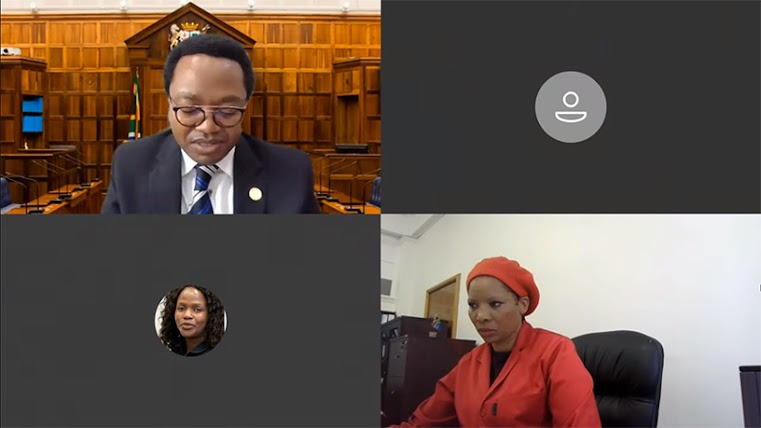The disconnected government


Many government departments experienced profound disruption during the lockdown as numerous points of service delivery were shuttered. At the same time, public servants headed home, adding another layer of complexity to the work model.
There were also some areas of excellence, such as GovChat, which bears out the remarks of Microsoft CEO Satya Nadella earlier this year when he was quoted as saying: “We’ve seen two years’ worth of digital transformation in two months.”
Participants at this roundtable were asked to recount their experiences in this most singular of years, as well as their opinion about how the public sector had fared during the lockdown.
Zaheer Ebrahim, lead sales engineer, Trend Micro, says the lockdown brought more security concerns, and his company found itself having conversations with government departments about the adoption of cloud and SaaS platforms.
“It’s been good for business that there have been more breaches, but it’s not good for organisations.”
Hloni Motloung, strategic marketing manager, TechSoft International, says Covid-19 exposed how little transformation was going on in the public sector, specifically with digital systems, and that in many cases, citizens still have to physically visit a department if they require something.
Thisnotion is echoed by Thabiso Hlatshwayo,solution consulting manager,OpenText, who says South Africa has a ‘disconnected government’.
“If someone passes away, the police get the initial statement, but because they’re doing this on paper instead of a digital platform, there’s a problem in getting that information to the next department.
“People were dying, but we couldn’t print death certificates fast enough from Home Affairs.”
Renesh Buldeo, managing executive for public sector, BCX, says collaboration between departments during the pandemic was a ‘challenge’, and that the public sector isn’t technologically mature enough to collect, process, and gain insights from data.
Anna Collard, SVP for content strategy, KnowBe4 Africa, quotes from a surveyrunbyher organisation in which respondents were asked about their level of maturity in cyber security. “The government and education sectors were two areas with the lowest scores. That’s concerning.”
Towela Mukosa, a managing partner at BI-Tech Africa, says some public servants weren’t able to access
proper internet connectivity, and had to go into their offices to receive, for example, training. She says departments were also found wanting in that documents couldn’t be accessed remotely or online.Building the foundation
Naseem Ahmed, cloud enablement practice lead, Synthesis, is alsothe team lead for the GovChat project, which is probably the largest citizen engagement platform on the continent. He says prior to Covid, they had spent a lot of time attempting to integrate with municipal systems, many of which were still running legacy systems.
“We’re talking about old stuff, 15, 20 years old. People are still talking about XML and SOAP (Simple Object Access Protocol) in this day and age. That’s technology from 15 years ago, and we needed to integrate into stuff that like. It’s insane.”
It took Covid-19 to steer government in the right direction.
Eldrid Jordaan, GovChat
He says in some cases, vendors at municipalities no longer support the software, or charge exorbitant rates.
He adds that GovChat has been built entirely on AWS, and this allowed it to scale rapidly.
He remembers that on the day the Sassa social relief grant was launched, it saw 600 000 messages a minute through the system at its peak, and contrasts this with the application system used by the Gauteng Department of Basic Education.
“Every year, in June, that system fails for at least a week. If you look at the licensing department, we’re paying eNaTIS R75 a transaction, and it’s permanently offline. These are legacy systems that cannot scale. You cannot solve this document
problem that everyone’s talking about if the systems are too old.”Eldrid Jordaan, GovChat’s CEO, says the platform’s success is due to the fact that it wasn’t built for the government, but, rather, built with the government over a number of years.
“It took Covid-19 to steer government in the right direction. We’ve been advocating for digitised government processes for some time,” he says.
It was able to roll out the social relief of distress grant application form within 48 hours of being approached by Sassa. It also helped alleviate pressure on the Sassa call centre, which was buckling under the number of calls from people seeking information about the grant, by including FAQs in the GovChat chatbot. In the first 20 days, the chatbot answered 413 000 questions from citizens. GovChat now has about five million users on the platform, and had processed 230 million messages in the last 90 days (during June to August).
“Covid-19 has been a serious blessing for GovChat because it showcased there was a massive need for what we are doing,” Jordaan says.
People were also able to get their Covid test results through the platform.
Jordaan says it was also able to see what device people were using when they applied for the R350 SRD grant, and, surprisingly, ‘a few hundred thousand’ were using iPhone 10s.
I can guarantee you that the South African government was not born on the internet.
Ian Jansen van Rensburg, VMware
There could be three reasons for this, he reckons: they were middle class, or perhaps previously middle-class people who now needed the R350, they were using stolen phones, which he thinks unlikely, or they were living beyond their means.
“I’ll leave that for you to decide.”
Basha Pillay, head of the Modern Platform Business Unit, Altron Karabina, says while parts of government are considering using cloud services, what the pandemic revealed was just how low, and slow, the adoption rate is. Despite this, his company had worked with Microsoft and provincial departments of health to roll out an app for hospitals to better manage their suppliers of PPE.
Help is on the way
Attendees were asked for suggestions about how the public sector could move further, and faster, on its journey of digital transformation.
Thomas Mangwiro, business development manager for public sector, Mimecast, suggests it focuses on cyber resilience, or what to do ‘should one of your technologies let you down’.
Ian Jansen van Rensburg, chief technologist for VMware Sub-Saharan Africa, believes there are two kinds of organisations: those born on the internet, of which Netflix, Amazon and Google are good examples, and those that weren’t and are bearing the weight of legacy systems.
“I can guarantee you that the South African government was not born on the internet,” he says.
“You have to start someplace, and what I’m suggesting is that you need a way to get those legacy systems to run on a specific platform in order to phase them slowly into a modern cloud platform.”
Is anyone seeing a greater uptake of open source in the public sector?
Muggie van Staden, CEO of Obsidian, says this is unfortunately not the case, and while the government has in the distant past positioned itself as supportive of open source technologies, in practice, there’s very little work being done compared to what’s happening in the private sector.
He suggests the public sector look at open platforms and standards, irrespective of whether it’s open source or proprietary, ‘because those are the things that can make government’s scale and handle some of the things that are being thrown their way’.
He also suggests the public sector focuses on security, as well as digital access for the public and remote working practices for public servants.
“Ultimately, the back-end platforms have to focus on agility, scalability and data integration. If they can’t do that, there’s no way they can service the kind of challenges coming their way.”
Ahmed, from Synthesis, says both the public and private sectors are struggling with cloud enablement, mainly because ‘people don’t understand what the cloud is and what it offers’.
“It’s a people and training problem. You can’t expect the C-suite executives to make decisions about technology they don’t understand. The technology is simple, but the problem is one of people. Until they understand what the cloud can do, they won’t be willing to move.”
Motloung, from TechSoft, says that while the private sector has plenty of solutions to offer the public sector, it’s often met with resistance. He says stakeholder buy-in is important, such as that of the labour movements.
“You need to show them that whatever technology we introduce is not going to make jobs redundant.” He suggests upskilling and reskilling as solutions.
BI Tech Africa’s Mukosasays training staff on how to use their laptops, and video conferencing apps, will enable them to get the most out of their tools.
BCX’ Buldeo believes one of the biggest challenges is the political sponsorship of digital transformation.
“You have ministers who are accountable for policy objectives, but how do you get their accountability for making their policy objectives a reality? I’m not sure how we get there, but in my experience over 20 years, the single largest obstacle for us to overcome is around where the political sponsorship lies.”
KnowBe4 Africa’s Collard says government alone can’t solve the problem, and we can’t expect it from them. She says it’s up to the industry to come up with collaborative ideas, like hackathons, for example.
“There’s amazing talent and potential and positivity we can tap into.”




